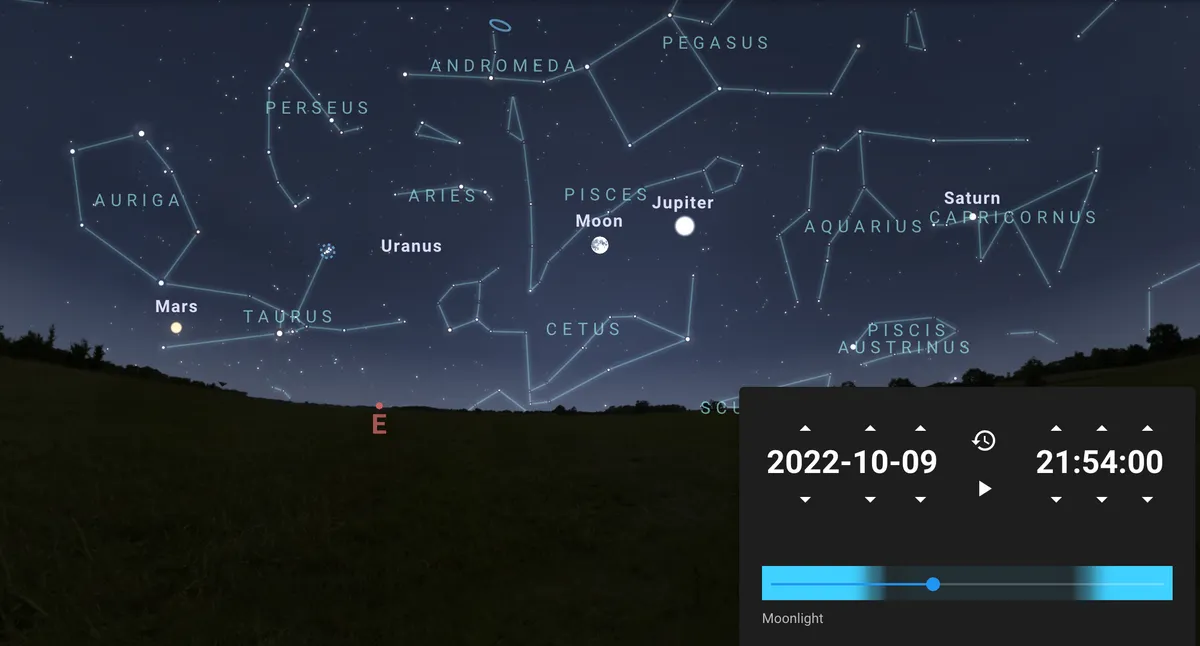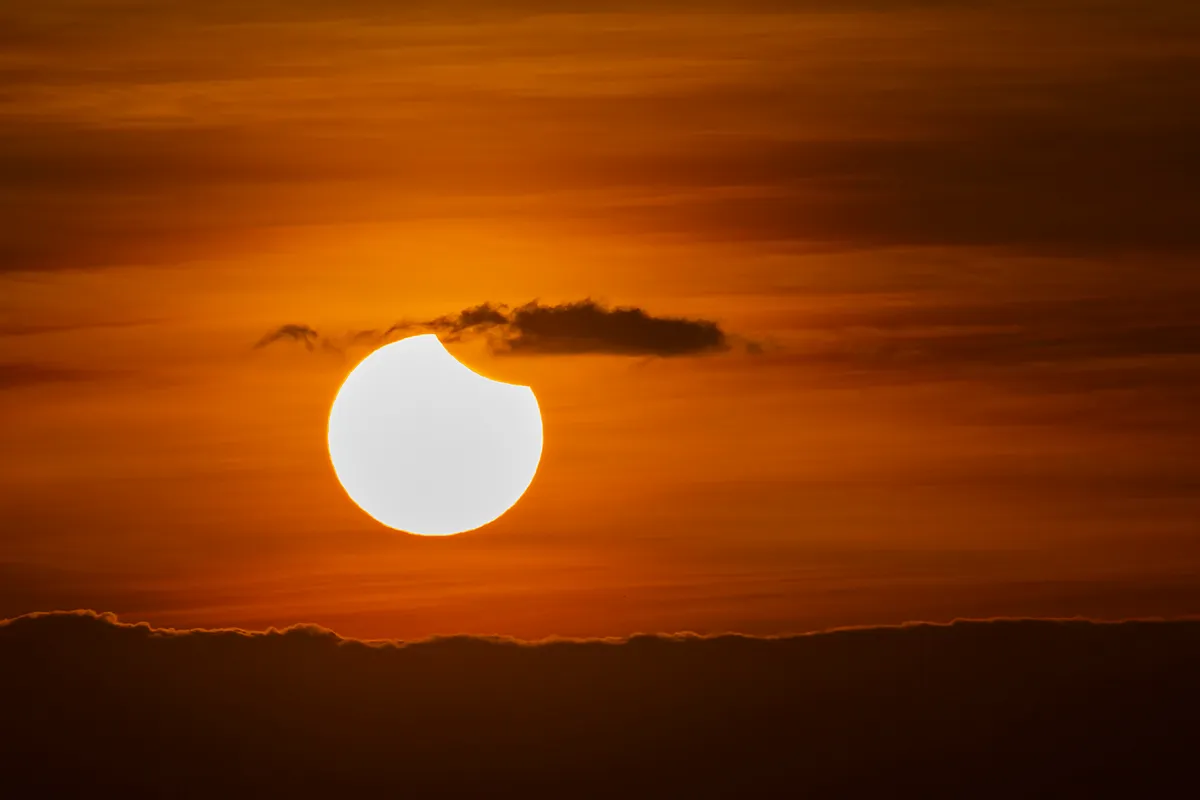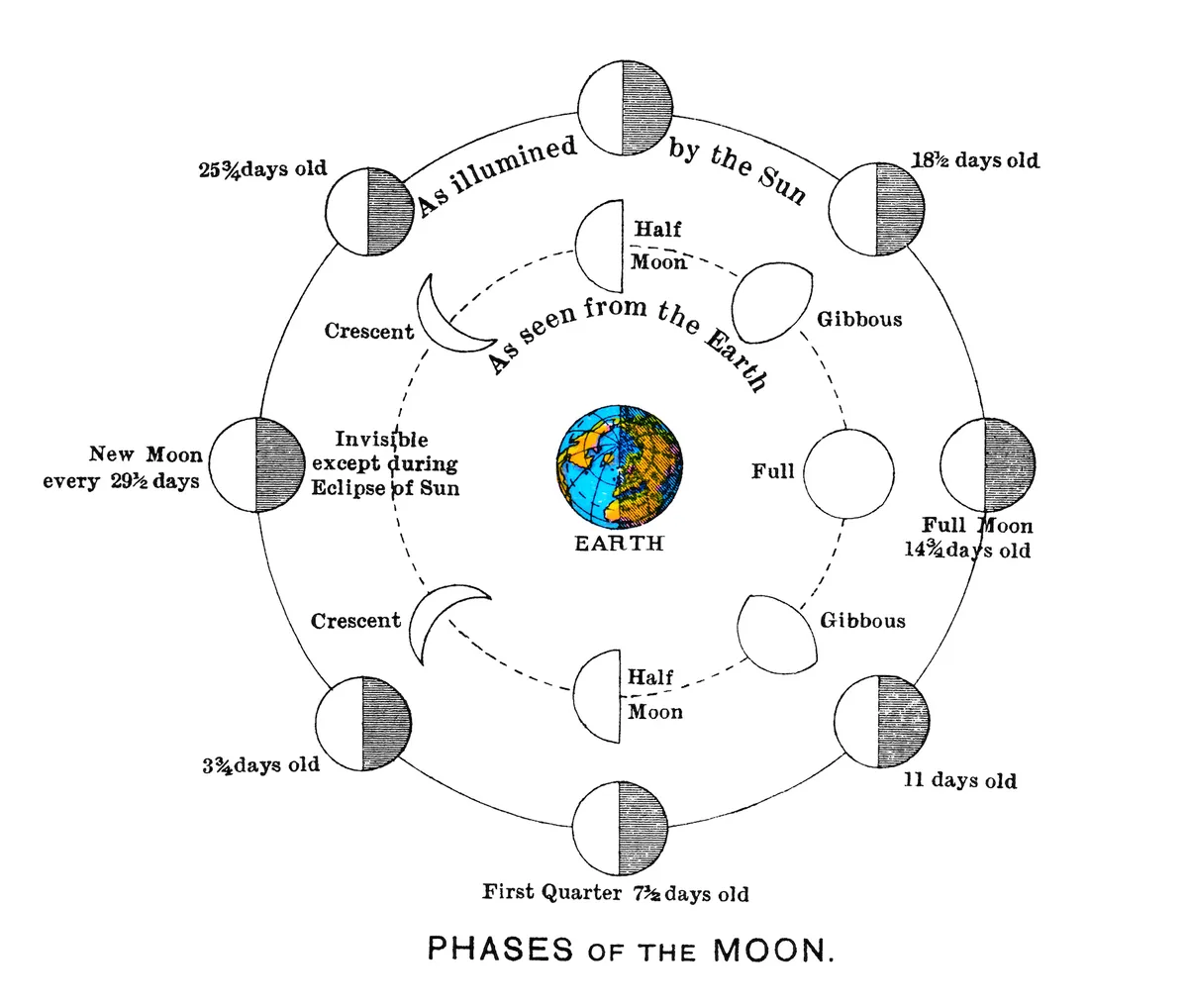There are plenty of reasons to look to the night sky in October. It's getting easier to spot constellations in the evening, and, later in the month, the Orionid meteor shower reaches its peak around 21-22 October (although it does have a fairly broad maximum, lasting about a week either side of 21 October). Meanwhile, Jupiter, having reached opposition in September, is still retrograding and can be seen in the constellation Capricornus, and Saturn, although currently retrograding, will resume an eastwards motion on 23 October
If you’re still enjoying the warm weather and clear nights, why not make the most of them with ourfull Moon UK calendarandastronomy for beginners guide? And, in case you missed it, we've pulled together the best pictures of the Harvest Moon in 2022.
When can I see the Hunter's Moon 2022?
The full Hunter's Moon will rise this Sunday on 9 October 2022 and will be visible all night in the UK and the northern hemisphere.
The Moon will rise in the constellation Pisces, following Jupiter as it travels across the night sky. Meanwhile, Saturn will take up its position in Capricornus, with Mars rising later in the evening in the constellation Taurus.

The virtually-full Hunter's Moon will rise in the east at 6:28pm, on Sunday 9 October (as seen from London, UK – times will vary depending on location). The Sun will set around 10 minutes earlier at 6:20pm, meaning the Moon will rise into a gradually darkening sky. The full Hunter's Moon will set in the west at 7:43am the following morning, 10 October.
If weather spoils the occasion, or you are unable to see the full Hunter's Moon at its peak, it will also appear full the night before on 8-9 October, and after on 10-11 October. In London, the forecast is currently for good visibility but with light cloud cover. So there's a good chance we'll be able to see Hunter's Moon peeking out from behind some patchy clouds.
What else is the Moon doing in October?
One day before the full Hunter's Moon, on the 8 October, the Moon will sit low in the eastern sky, just 2.1° south of Jupiter in the constellation Pisces. Three days after being full, on 12 October, it will skim Uranus at just 0.9° distant, in the constellation Aries, before moving into Taurus on 14 October.
Later in the month, at the new Moon on 25 October, there will be a partial solar eclipse, which will be greatest over northern Siberia, although the partial phases will be visible (weather permitting) from the UK. In London, the partial solar eclipse begins at 10:08am on Tuesday 25 October 2022 then reaches maximum at 10:59am (meaning the moment when the Moon is closest to the centre of the Sun), before coming to an end at 11:51am, for a total duration of 1 hour and 43 minutes.

When is the best time to see Hunter's Moon?
The Hunter's Moon will reach peak illumination at 9:54pm on Sunday 9 October. It will rise at 6:28pm and set the following morning at 7:43am. When the Moon is at peak illumination,it will be at a distance of around 376,426km away from Earth.
Why is it called Hunter's Moon?
The Hunter's Moon follows the Harvest Moon. Every four years, the Hunter's Moon falls in November, while the rest of the time it appears in October. In the Autumn, the now well-fattened animals would provide crucial sustenance for people over the winter months, while the newly-cleared fields (from the September harvest) meant clear lines of vision.
Is it called anything else?
There are lots of other names for the Hunter's Moon, many of which relate to the changing seasons, such as the 'Falling Leaves Moon' or the 'Fall Moon'. Other Native American traditions often referred to the full Moon in October as the 'Travel Moon'. This was thanks to its lingering presence in the autumn sky, casting long shadows over vast landscapes, and aiding travellers in their journey.
Is the Hunter's Moon in 2022 a supermoon?
No, the Hunter's Moon in 2022 is not a supermoon.
The Moon is a supermoon when it's 360,000km (or less) away from Earth in its orbital path, and we'll often have two or three full supermoons in a row. In 2022, the Strawberry Moon(June), theBuck Moon(July) and theSturgeon Moon(August) were all supermoons.
There will not be any more supermoons in 2022. The next supermoon will be on 1 August 2023, followed by a rare blue supermoon at the end of the month on 30 August 2023.
What causes a full Moon?
A full Moon occurs when the Moon is fully illuminated by the Sun. This happens when the Earth is located directly between the Sun and the Moon, and we usually have 12 full Moons in one calendar year.
Technically, the Moon is only 'full' for an instant (called syzygy), but will appear full for the whole night, as well as during both nights on either side of being full. At full, the Moon is precisely 180° opposite the Sun in ecliptic longitude.

The full Moon is part of the lunar cycle that occurs over a period of 29 days, 12 hours, 44 minutes, and 3 seconds (generally rounded to 29.53 days). That means we get a full Moon every 29.53 days, and this figure is calculated by the time it takes the Moon to orbit the Earth once, as measured from new Moon to new Moon. (This is also known as one synodic month.)
However, because one lunar cycle takes less than one calendar month in our Gregorian calendar, we sometimes have 13 full Moons in a year. This occurs around every two to three years. This means that we will see two full Moons in a single month, and this extra full Moon is known as a ‘Blue Moon'. The next blue Moon will occur on 30 August 2023.
Similarly, we sometimes get two new Moons in a month, and this extra new Moon is known as aBlack Moon. The most recent Black Moon was 30 April 2022, and the next will be next year, 19 May 2023.
Read more about the Moon: